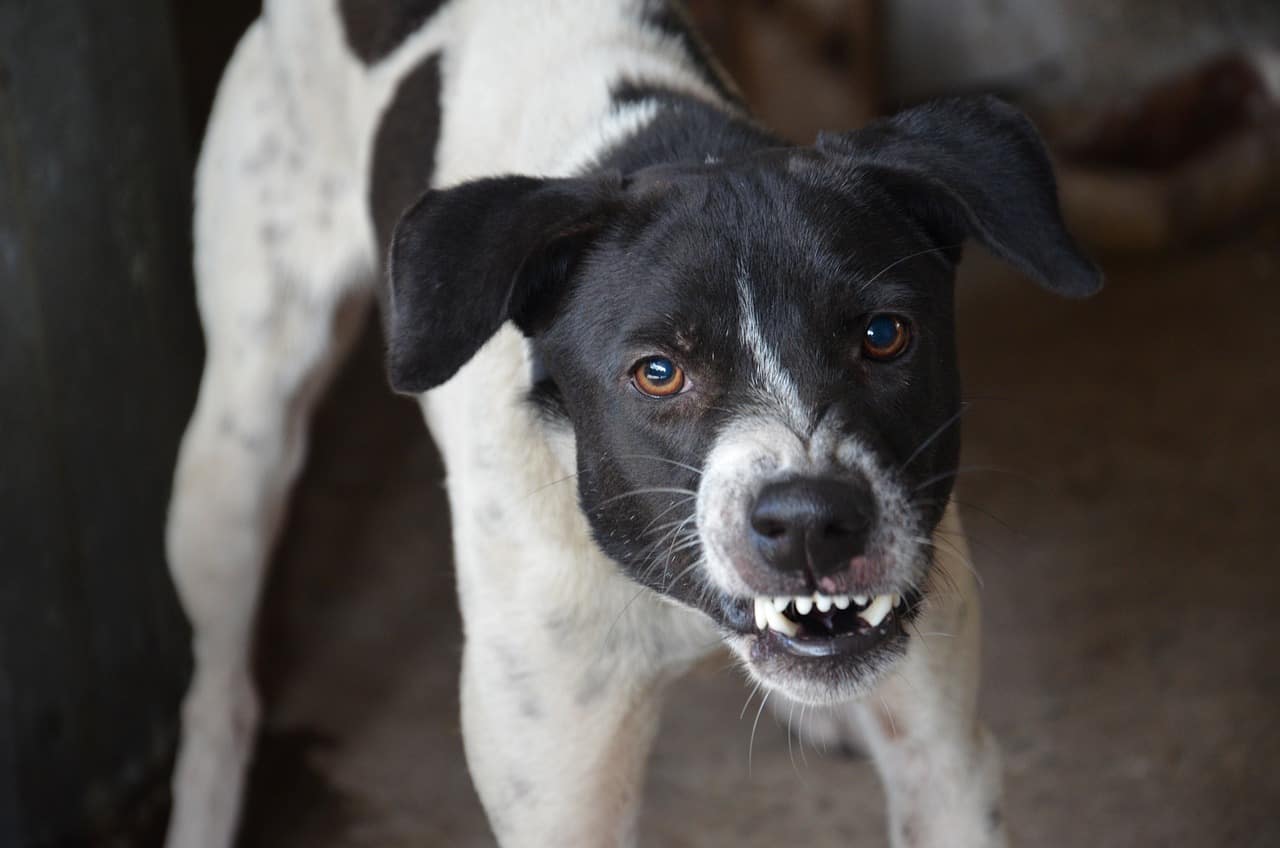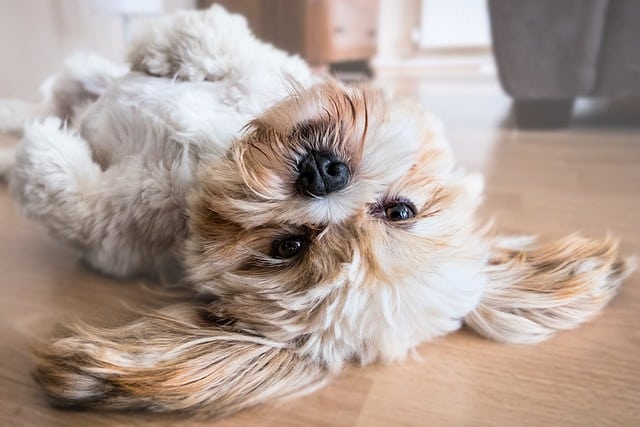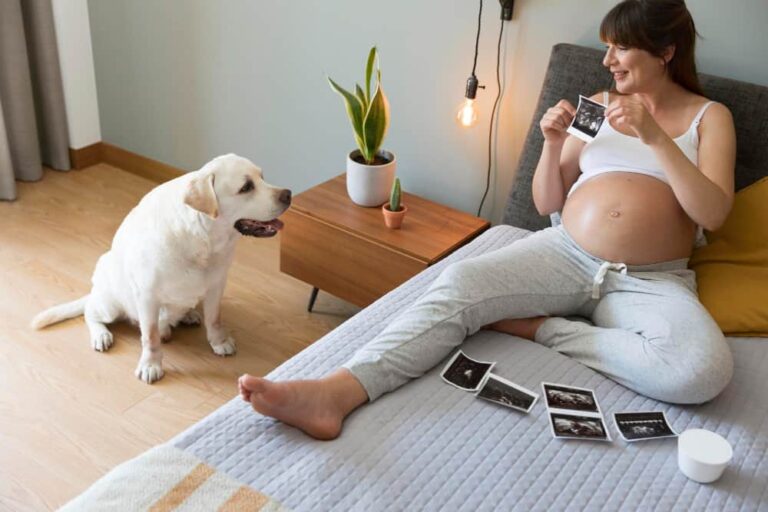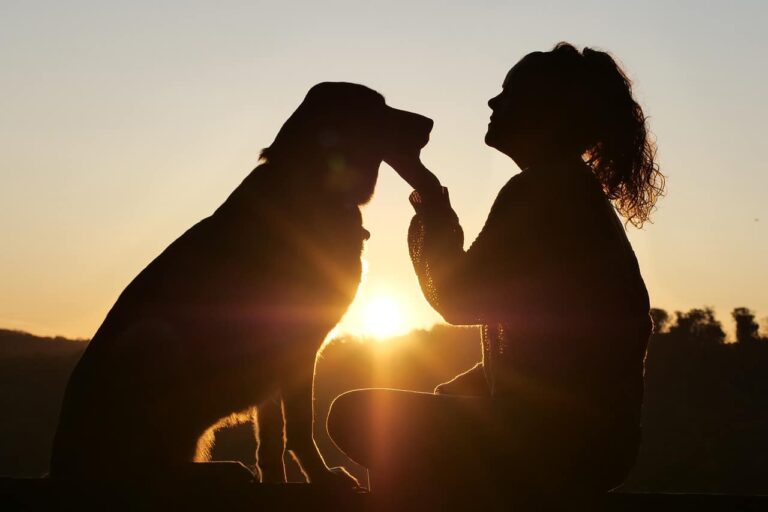How to Stop Dog Jealousy Aggression: Tips to Help Your Dog Cope With Aggression

A common concern that many dog owners may face jealousy and aggression. This behavior can be both puzzling and concerning for pet owners.
It is not always easy to identify whether your dog is acting out because he is attempting to protect you from other people. Or because he is a possessive dog or jealous of other people.
Dogs experience a form of environmental anxiety known as “resource guarding.” Its a “possession guarding.”
In this blog post, we will delve into the complexities of this issue. Also, explore potential strategies on how to stop dog jealousy aggression.
Let’s make a positive change in your dog’s behavior together.
Contents
- Key Takeaways
- How To Stop Dog Jealousy Aggression
- Identify the triggers
- Provide equal attention
- Reward good behavior
- Train your dog
- Desensitization and Counterconditioning
- Obedience Training
- Establish Clear Rules
- Avoid Punishment
- Practice Patience
- Seek professional guidance
- Does a jealous dog run away?
- How to stop dog jealousy aggression towards other dogs ?
- Do dogs bite out of jealousy?
- Conclusion
Key Takeaways
- Understanding the root cause of jealousy is important for addressing the issue.
- Provide equal attention and affection to all pets in the household.
- Use positive reinforcement training to promote good behavior and reduce jealousy.
- Seek professional help from a certified dog trainer or behaviorist if needed.
How To Stop Dog Jealousy Aggression
Addressing dog jealousy aggression requires understanding, training, and consistent reinforcement. Here are some steps you can take to help stop dog jealousy aggression:
Identify the triggers

To stop dog jealousy aggression, start by identifying the triggers that provoke your dog’s aggressive behavior. Dogs get jealous of various factors such as attention, food, toys, or other resources. Pay close attention to your dog’s behavior and look for signs of dog’s jealous and aggression, such as growling or snapping, in response to these triggers. When you bring a new dog or puppy into the household, your current dog may become envious. This is because your current dog may feel threatened or replaced by the newcomer.
A dog can exhibit behaviors that show they are feeling left out or ignored by their pet parent after the introduction of a new person or new baby into the household.
Provide equal attention
Give all your pets equal attention to help stop dog jealousy and aggression. When dogs feel jealous, they may exhibit aggressive behavior to get your attention and resources. To manage jealousy situations, it is important to provide equal attention and affection to all pets in the household. This helps create a sense of fairness and reduces the likelihood of jealousy. By establishing consistent rules and boundaries, using positive reinforcement training, and ensuring each pet has its own space and resources, you can help prevent and address dog jealousy aggression effectively.
| Provide equal attention | Manage jealousy situations |
|---|---|
| Give all pets equal time and affection | Establish consistent rules and boundaries |
| Avoid favoritism and show fairness | Use positive reinforcement training |
| Spend quality time with each pet individually | Ensure each pet has their own space, toys, and resources |
Reward good behavior
By consistently rewarding your dog’s calm and non-jealous behavior, you can effectively address and stop dog jealousy aggression.
Here are four tips to help you reward good dog behavior and manage your dog’s jealousy:
- Use positive reinforcement: Reward your dog with treats, praise, or playtime when they exhibit calm and non-jealous behavior.
- Be consistent: Make sure to reward your dog every time they demonstrate the desired dog behavior.
- Set clear expectations: Use clear cues and commands to communicate what behavior you expect from your dog.
- Incorporate training sessions: Regular training sessions can help reinforce positive behavior and improve your dog’s overall obedience.

Train your dog
Train your dog to redirect their attention: Teach your dog alternative behaviors to replace their aggressive response. For example, when they start to show signs of jealousy aggression, redirect their attention to a toy or engage them in a training exercise that rewards calm behavior.
Desensitization and Counterconditioning
Desensitization and counterconditioning are two effective techniques used to address dog jealousy aggression. Desensitization involves gradually exposing your dog to the triggers of their aggression in a controlled and safe manner, starting with a low-intensity version of the trigger and gradually increasing it over time. This helps your dog become desensitized to the trigger and reduces their aggressive response.
Counterconditioning, on the other hand, focuses on changing your dog’s emotional response to the trigger from negative to positive. This is done by pairing the trigger with something your dog loves, such as treats or playtime.
Obedience Training
To address dog jealousy aggression, you can start by incorporating obedience training into your dog’s routine. Obedience training helps establish boundaries and teaches your dog to respond to commands. This can be especially helpful in managing jealous behavior and preventing aggression. By teaching your dog basic commands like sit, stay, and leave it, you can redirect their attention and assert control in situations that trigger jealousy. Consistency and positive reinforcement are key in obedience training to promote good behavior and reduce jealousy.
| Benefits of Obedience Training | Tips for Obedience Training | Common Commands to Teach |
|---|---|---|
| 1. Establishes boundaries | 1. Start training early | 1. Sit |
| 2. Builds trust and respect | 2. Use positive reinforcement | 2. Stay |
| 3. Reduces anxiety and aggression | 3. Be consistent with commands | 3. Leave it |
Establish Clear Rules
Create clear rules to address and stop dog jealousy aggression effectively. Here are four tips to help you establish those rules and manage your dog’s behavior:
- Consistency is key: Set clear boundaries and enforce them consistently to avoid confusion.
- Be proactive: Anticipate situations that may trigger your dog’s jealousy and take preventive measures.
- Reinforce positive behavior: Reward your dog for calm and non-jealous behavior to encourage good habits.
- Seek professional help if needed: If your dog’s jealousy aggression persists despite your efforts. Consult a certified dog trainer or behaviorist for guidance.
Avoid Punishment

When addressing dog jealousy aggression. It’s important to avoid punishment as it can worsen the behavior and create negative associations for your dog. Punishment may make your dog more fearful and anxious, which can escalate their aggression.
Instead, focus on positive reinforcement and reward-based training to address dog jealousy.
If the aggression persists or becomes dangerous. It’s crucial to seek professional help from a certified dog trainer or behaviorist who can provide guidance and support.
Practice Patience
Be patient and consistent in addressing and stopping dog jealousy aggression. It may take time for your dog to overcome their jealous behavior. But with patience and consistency, you can help them learn to cope with their feelings healthier than a jealous dog. Here are some tips to practice patience when dealing with jealous dogs:
- Understand that change takes time, and be patient with your dog’s progress.
- Consistently reinforce positive behaviors and redirect negative ones.
- Give your dog space and time to adjust to new situations or the presence of another dog.
- Seek professional help to develop a tailored plan for addressing your dog’s aggression.
Seek professional guidance
If you’re struggling to address your dog’s jealousy aggression. Seeking professional guidance can provide valuable insight and strategies to help you and your dog cope with this behavior.
Here are four reasons why getting professional help is important:
- Expert knowledge: Certified dog trainers and behaviorists have the expertise to understand the underlying causes of jealousy in dogs. And can provide tailored solutions for your specific situation.
- Behavior modification techniques: Professionals can teach you effective techniques to change your dog’s aggressive behavior. And help them learn more appropriate ways to express their emotions.
- Safety and well-being: Jealousy aggression can be dangerous, both for your dog and those around them. Seeking professional help ensures that you take the necessary steps to ensure everyone’s safety and well-being.
- Long-term success: With the guidance of a professional. You can work towards long-term success in managing and reducing your dog’s jealousy aggression. They can provide ongoing support and guidance throughout the process.
Bad habits can be avoided if you and your dog work together proactively. For your dog to be happy and healthy, it is important to meet both its physical and emotional requirements.

Does a jealous dog run away?
Yes, a jealous dog can sometimes run away. Experience jealousy in dogs can stem from various reasons. Such as feeling neglected or threatened by the presence of another pet or person receiving attention.
If a dog feels jealous, it may exhibit behaviors like running away to escape the situation that is causing them distress. Pet owners need to address and manage jealousy issues in dogs. To prevent such unwanted behavior and ensure their safety and well-being.
How to stop dog jealousy aggression towards other dogs ?
To stop dogs from experiencing jealousy and aggression towards other dogs. It is important to address the underlying causes and implement appropriate training techniques. Here are some strategies that can help:
- Identify triggers: Observe your dog’s behavior and determine what triggers their jealousy and aggression towards other dogs. This could be food, toys, attention, or territory.
- Manage the environment: Avoid situations that may trigger your dog’s aggression. Keep your dog separated from other dogs when necessary, and gradually introduce controlled interactions to desensitize them.
- Positive reinforcement: Use reinforcement training techniques to reward your dog for calm and non-aggressive behavior. Focus on redirecting their attention away from jealousy triggers and towards more appropriate behaviors.
- Training and socialization: Enroll your dog in obedience training classes to improve their obedience and social skills. Gradually expose them to controlled social situations with other dogs to help them become more comfortable and less reactive.
- Consistency and structure: Establish consistent rules and routines at home to provide your dog with a sense of structure and security. This can help reduce feelings of jealousy and establish a more harmonious environment.
- Seek professional help: If your dog’s jealousy aggression persists or escalates, consider seeking help from a professional dog trainer or behaviorist. They can provide personalized guidance and develop a behavior modification plan tailored to your dog’s needs.
Remember, addressing jealousy and aggression towards other dogs requires patience, consistency, and positive reinforcement. With time and effort, you can help your dog overcome this behavior and enjoy a more peaceful coexistence with other dogs.
Do dogs bite out of jealousy?

When dogs feel jealous, they may occasionally bite to express their emotions. Jealousy in dogs can lead to aggressive behavior, especially towards another dog. This jealous behavior results from feeling threatened or anxious about losing attention, resources, or their position in the household.
It’s important to address and manage this aggression to create a safe and harmonious environment for all pets involved.
Conclusion
Addressing how to stop dog jealousy aggression and managing your dog’s jealousy aggression is possible with the right knowledge and tools.
Understanding the signs of jealousy in dogs and implementing strategies such as equal attention. Positive reinforcement training and a harmonious environment can help your dog cope with aggression.
Remember, consistency and patience are key in this process. With your dedication and effort, you can make a positive change in your dog’s behavior and create a happier, more peaceful relationship with your furry friend.
Source:-
https://www.whole-dog-journal.com/behavior/jealousy-aggression/






